
Charles XIII, or Carl XIII, was King of Sweden from 1809 and King of Norway from 1814 to his death. He was the second son of King Adolf Frederick of Sweden and Louisa Ulrika of Prussia, sister of Frederick the Great.

The history of Sweden from 1772 to 1809 is better known as the Gustavian era of Kings Gustav III and Gustav IV, as well as the reign of King Charles XIII of Sweden.

Sophia Magdalena of Denmark was Queen of Sweden from 1771 to 1792 as the wife of King Gustav III.

Carl Gustaf Pilo was a Swedish painter. Pilo worked extensively in Denmark as a painter to the Danish Royal Court and as professor and director at the Royal Danish Academy of Art, as well as in his native Sweden.
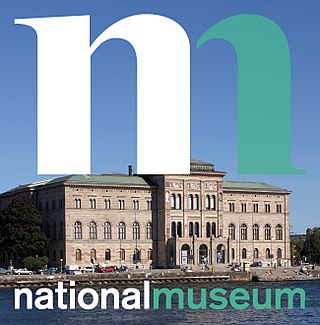
Nationalmuseum is the national gallery of Sweden, located on the peninsula Blasieholmen, in central Stockholm.

Princess Sophia Albertina of Sweden was the last Princess-Abbess of Quedlinburg Abbey, and as such reigned as vassal monarch of the Holy Roman Empire.

Swedish art refers to the visual arts produced in Sweden or by Swedish artists. Sweden has existed as a country for over 1,000 years, and for times before this, as well as many subsequent periods, Swedish art is usually considered as part of the wider Nordic art of Scandinavia. It has, especially since about 1100, been strongly influenced by wider trends in European art. After World War II, the influence of the United States strengthened substantially. Due to generous art subsidies, contemporary Swedish art has a big production per capita.

Alexander Roslin was a Swedish painter who worked in Scania, Bayreuth, Paris, Italy, Warsaw and St. Petersburg, primarily for members of aristocratic families. He combined insightful psychological portrayal with a skillful representation of fabrics and jewels.
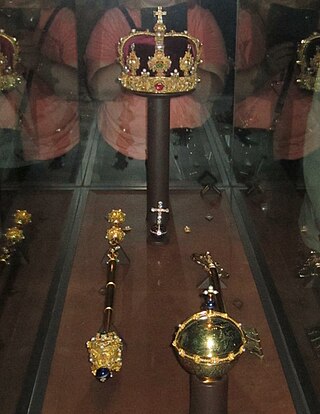
Sweden's regalia are kept deep in the vaults of the Royal Treasury, underneath the Royal Palace in Stockholm, in a museum that is open to the public. The crowns and coronets have not been worn by Swedish royalty since 1907, but they are still displayed at weddings, christenings and funerals.

Beata Charlotta "Charlotte" Eckerman, was a Swedish opera singer and actress. She was also a very well known courtesan during the Gustavian era, and the official royal mistress of Charles XIII of Sweden from 1779 to 1781.

Carl Frederik von Breda was a Swedish painter who studied in and spent much of his career in Britain before becoming painter to the Swedish court. He was born in Stockholm in 1759, and moved to Britain where he was a student of Joshua Reynolds. Breda specialized in painting portraits and was called "the van Dyck of Sweden". He returned to Sweden 1796 where he became professor at the Academy of Arts, a popular portraitist, and a court painter. Breda married at age 22 and his son, Johan Fredrik, was also a painter, who studied under his father. Breda died in Stockholm in 1818.

Countess Christina Augusta Löwenhielm, was a Swedish noblewoman and courtier. She is known for her love affair with the later Charles XIII of Sweden. She is also famous in history as one of "the three graces" of the Gustavian age; three ladies-in-waiting immortalized in the poem Gracernas döpelse by Johan Henric Kellgren, and known profiles of the epoch.

Adolf Ulrik Wertmüller was a Swedish painter whose notable works include Danaë receiving Jupiter in a Shower of Gold.
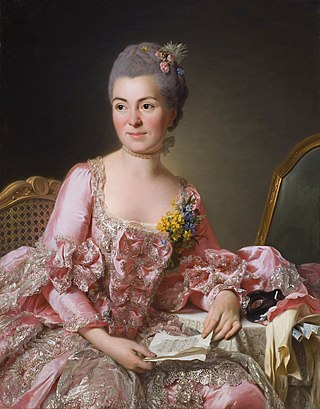
Marie-Suzanne Giroust, known as Madame Roslin, was a French painter, miniaturist, and pastellist, known for her portraits. She was a member of the Académie royale de peinture et de sculpture. Only a small number of her works have been identified.
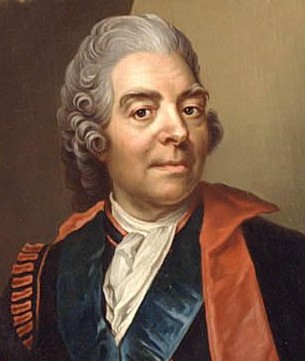
Gustaf Lundberg was a Swedish rococo pastelist and portrait painter. He trained and worked in Paris and later was appointed court portrait painter in Stockholm.

Gustav III, also called Gustavus III, was King of Sweden from 1771 until his assassination in 1792. He was the eldest son of King Adolf Frederick and Queen Louisa Ulrika of Sweden.
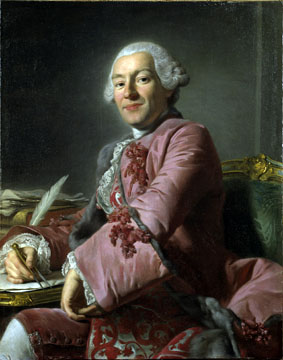
Carl Fredrik Adelcrantz was a Swedish architect and civil servant. Adelcrantz's style developed from a rococo influenced by Carl Hårleman, the leading architect in Sweden in the early years of his career, to a classical idiom influenced by the stylistic developments in France in the mid-to-late 18th century. As överintendent, he headed the royal and public building works from 1767 until his retirement in 1795.

Lorens or Lorenz Pasch the Younger (1733–1805) was a Swedish painter.
Count Fabian Reinhold von Fersen was a Swedish count, politician, officer and courtier. He was the son of Axel von Fersen the Elder and Hedvig Catharina De la Gardie and the brother of Count Axel von Fersen the Younger, Hedvig Eleonora von Fersen and Sophie Piper.

The Gustavians were a political faction in the Kingdom of Sweden who supported the absolutist regime of King Gustav III of Sweden, and sought after his assassination in 1792 to uphold his legacy and protect the interests of his descendants of the House of Holstein-Gottorp.





















